Table of Contents[Hide][Show]
On the Type 2 Diabetes Talk podcast, we recently covered eating to beat inflammation.
When living with type 2 diabetes or prediabetes, balancing your blood sugar is crucial, but there’s another factor you may want to consider: oxidative stress.
Oxidative stress occurs when harmful molecules, called free radicals, accumulate in your body and cause cell damage, leading to complications like heart disease and nerve damage.
Luckily, foods rich in antioxidants can help fight oxidative stress, ward off inflammation, and dramatically reduce your risk of complications.
Plus, by incorporating antioxidant-rich foods into your diet, you can protect your health and support better blood sugar control and cholesterol levels as well.
Why Antioxidant-Rich Foods Boost Your Diabetes Health
With prediabetes and type 2 diabetes, addressing oxidative stress and inflammation is equally important as regulating blood sugar.
Here’s how antioxidants work to enhance your diabetes health.
Antioxidants and Inflammation
Chronic inflammation is closely linked to type 2 diabetes and its complications.
When free radicals accumulate, they trigger a ‘chronic’ inflammatory process in your body, which can lead to a repetitive cycle and cause damage to your body’s cells and overall health.
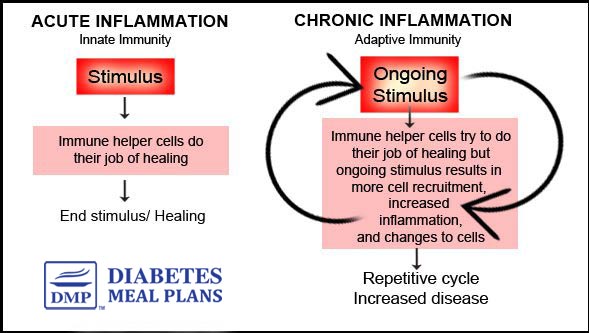
Antioxidant-rich foods can help reduce markers of inflammation like C-reactive protein (CRP), helping to protect against long-term damage.
Antioxidants and Blood Sugar and A1c
Oxidative stress also contributes to insulin resistance, a primary factor in high blood sugar levels in prediabetes and type 2 diabetes.
By reducing oxidative stress, antioxidants improve insulin sensitivity, allowing your body to regulate blood sugar more effectively.
Antioxidants and Cholesterol
The relationship between antioxidants, inflammation, and cholesterol is particularly important, as diabetes puts you at a higher risk of cardiovascular disease.
Oxidative stress can cause LDL cholesterol to oxidize, which accelerates the formation of plaque in the arteries, leading to heart disease.
Antioxidant-rich foods help prevent LDL oxidation, reducing the risk of atherosclerosis. Additionally, these foods lower inflammation, which further supports improved cholesterol profiles.
Regular consumption of antioxidant-rich foods has been linked to higher levels of HDL (“good” cholesterol) and reduced levels of oxidized LDL, offering protection for heart health.
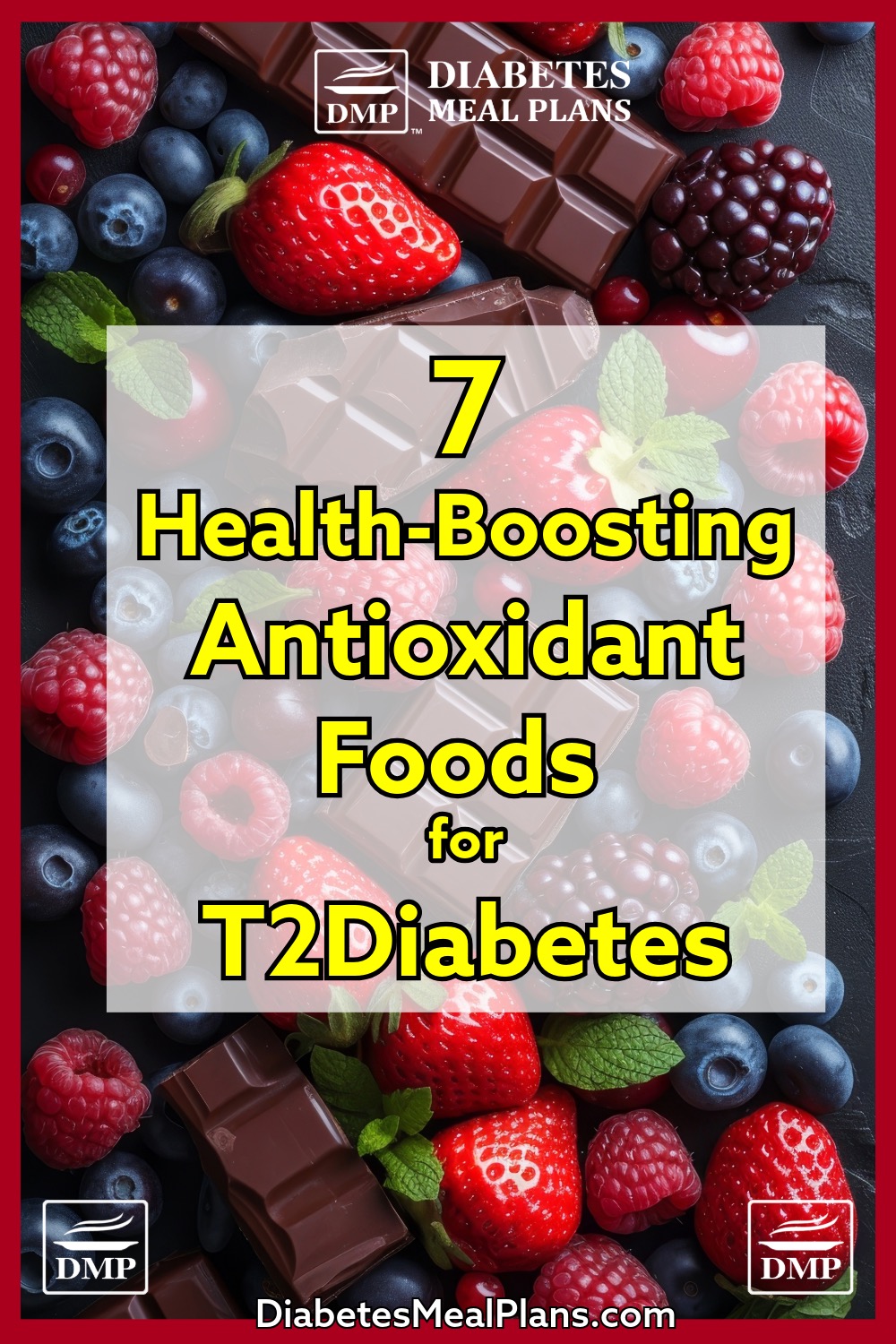
7 Antioxidant Foods For Diabetes
1. Berries
Berries—such as blueberries, strawberries, raspberries, and blackberries—are nutritional powerhouses, packed with antioxidants like vitamin C and anthocyanins, which give these fruits their vibrant colors.
These antioxidants help combat inflammation and oxidative stress, both of which are significant contributors to complications in people with diabetes.
Berries also help improve insulin sensitivity and regulate blood sugar, all while being naturally low in carbohydrates.
This makes them a perfect fit for a daily burst of goodness, as they offer a sweet, satisfying snack without causing spikes in blood sugar.
How to add berries to your diet: Enjoy a handful of fresh or frozen berries as a snack, mix them into a delicious smoothie, eat them with a bowl of Roasted Nut Muesli, or sprinkle them over full-fat Greek yogurt for a satisfying, nutrient-packed treat.
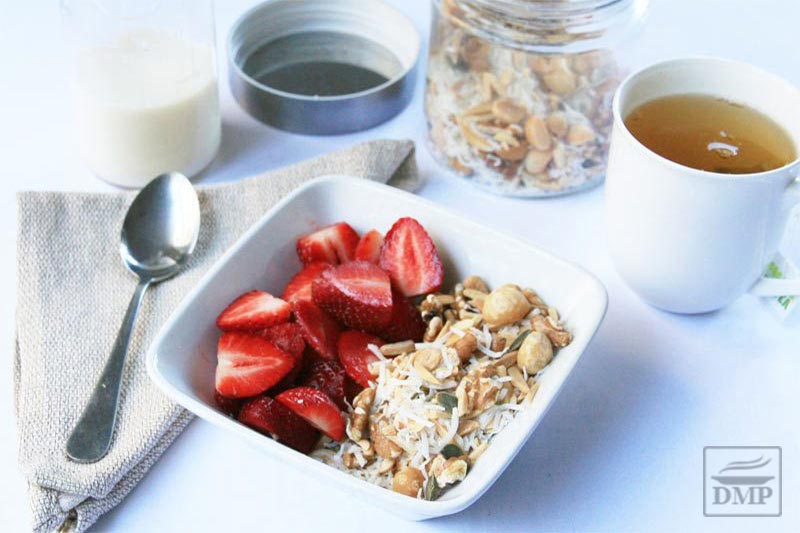
2. Leafy Greens
Leafy greens like spinach, kale, and Swiss chard are some of the most nutrient-dense vegetables. And it just so happens they are loaded with vitamins A, C, and E—key antioxidants that protect your body from oxidative stress.
These greens are also rich in carotenoids like lutein and zeaxanthin, which help protect your eyes from diabetes-related damage.
On top of their antioxidant properties, leafy greens are extremely low in carbohydrates and high in fiber, making them an excellent addition to your eating plan.
Consuming these greens regularly can help regulate blood sugar levels while supporting heart health.
How to add leafy greens to your diet: Toss leafy greens into salads, stir-fry them with olive oil and garlic, or add them to soups. Add some sauteed spinach as a side with eggs for breakfast. Or include them in a breakfast scramble. You can even blend them into smoothies for an easy way to increase your intake of antioxidants.
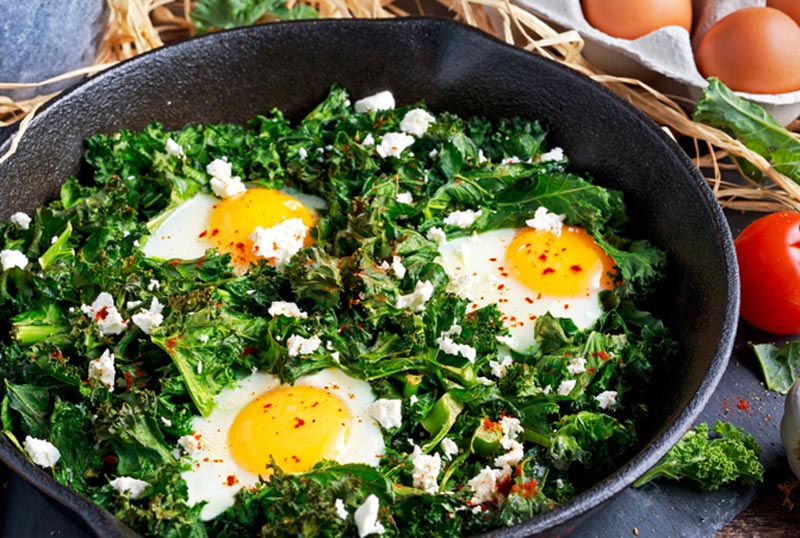
3. Nuts and Seeds
Nuts like almonds and walnuts, and seeds such as flaxseeds and chia seeds, are rich in vitamin E and polyphenols, both of which are powerful antioxidants that help fight inflammation.
They also provide a healthy dose of fiber, protein, and heart-healthy fats, which are essential for maintaining stable blood sugar levels.
Nuts make a perfect daily snack, as the combination of nutrients in nuts and seeds helps reduce oxidative stress and improve overall metabolic health!
How to add nuts and seeds to your diet: Add a handful of nuts or seeds to your salads or sprinkle chia or flaxseeds on top of full-fat Greek yogurt. Or, simply have a handful of different nuts each day!

4. Dark Chocolate (70% or Higher Cocoa)
Yes, dark chocolate can be good for you!
Dark chocolate with at least 70% cocoa is rich in flavonoids, which are antioxidants known to lower blood pressure, reduce inflammation, and improve insulin sensitivity.
It’s important to choose dark chocolate that is low in sugar and high in cocoa content to maximize the health benefits.
In moderation, dark chocolate is a delicious way to enjoy a sweet treat while still keeping your blood sugar in check. Just check the label for carb counts and be mindful of portion sizes.
How to add dark chocolate to your diet: Enjoy a small square (or two) of dark chocolate as a snack or melt it and drizzle over a handful of berries for a double dose of antioxidants.
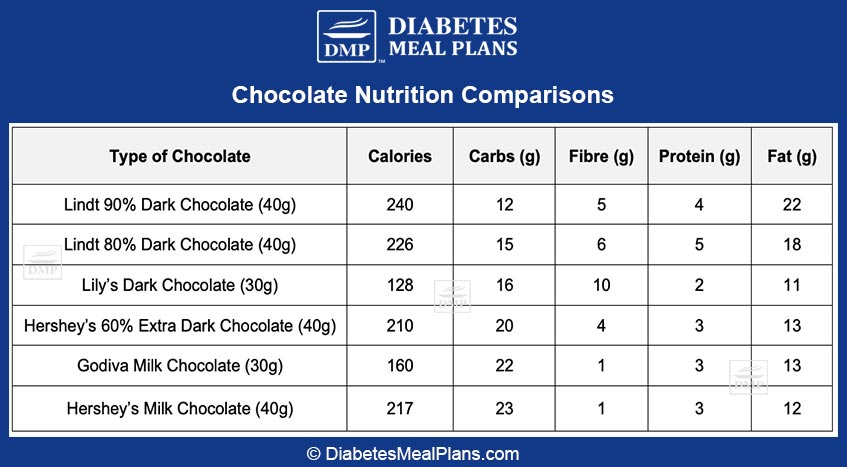
5. Green Tea
Green tea is one of the healthiest beverages you can enjoy, particularly if you’re managing prediabetes or type 2 diabetes.
It’s packed with polyphenols like epigallocatechin gallate (EGCG), which is known for its powerful antioxidant effects.
Green tea can help improve insulin sensitivity, lower blood sugar levels, and reduce inflammation.
Incorporating green tea into your routine is a simple way to support your metabolic health, protect against diabetes-related complications, and improve overall well-being.
How to add green tea to your diet: Sip on a cup of green tea between meals, or try matcha—a more concentrated form of green tea powder—in your smoothies or desserts for a stronger antioxidant boost.
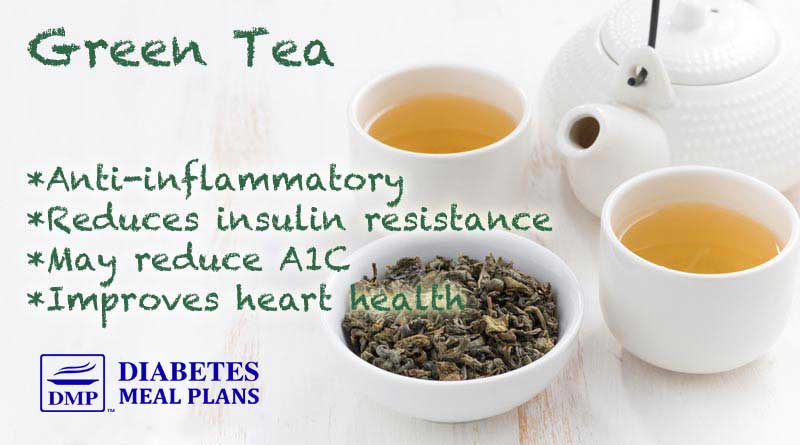
6. Tomatoes
Tomatoes are an excellent source of lycopene, an antioxidant that’s especially effective at combating oxidative stress and reducing inflammation.
Lycopene is also linked to a reduced risk of heart disease, which is particularly relevant for people with type 2 diabetes, as they are more prone to cardiovascular complications.
Tomatoes are also low in carbohydrates, making them a diabetes-friendly food that’s easy to incorporate into your meals.
How to add tomatoes to your diet: Add fresh tomatoes to salads, roast them as a flavorful side dish, or use them into tasty sauces to add flavor and nutrients to your meals.
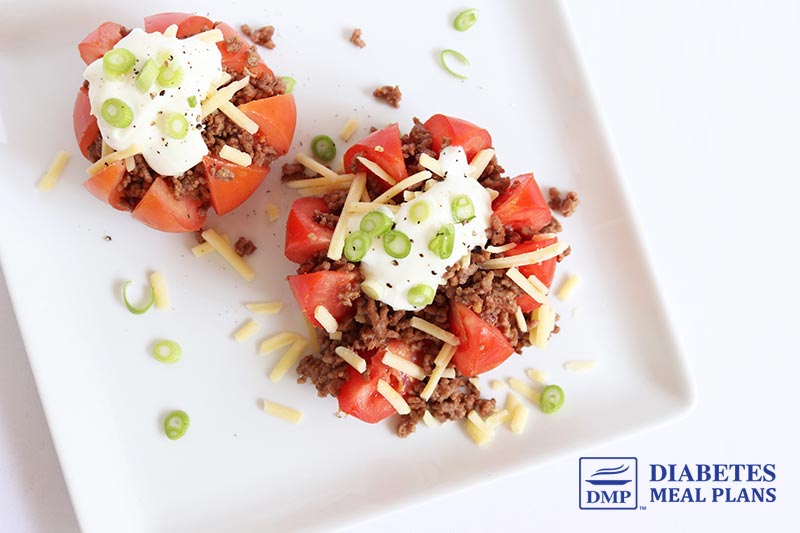
7. Cinnamon
Cinnamon, while technically a spice, deserves a spot on this list due to its potent antioxidant and anti-inflammatory properties.
Cinnamon has been shown to improve insulin sensitivity and help lower morning blood sugar levels.
It contains polyphenols that act as powerful antioxidants, reducing oxidative stress and helping your body use insulin more effectively. And it’s easy to add cinnamon to your diet without impacting your carb intake!
How to add cinnamon to your diet: Sprinkle cinnamon on your coffee, mix it into full-fat yogurt, or make fresh cinnamon tea for a warming, antioxidant-rich addition to your daily plan.

Conclusion
Incorporating antioxidant-rich foods into your diabetes diet plan can have a tremendous impact on your health when managing type 2 diabetes or prediabetes.
These foods—whether it’s a handful of berries, a cup of green tea, or a sprinkle of cinnamon—not only help to stabilize blood sugar levels but also work to reduce oxidative stress and inflammation, two major contributors to diabetes-related complications.
By regularly including these nutrient-dense, antioxidant-rich options in your meals, you’re taking a proactive step toward better health!
Get started on the right track with your nutrition and grab a copy of our recommended food list below.

Maggie B
Very helpful article. Much appreciated! Thank you!
Dr Jedha
Glad you found it helpful Maggie!